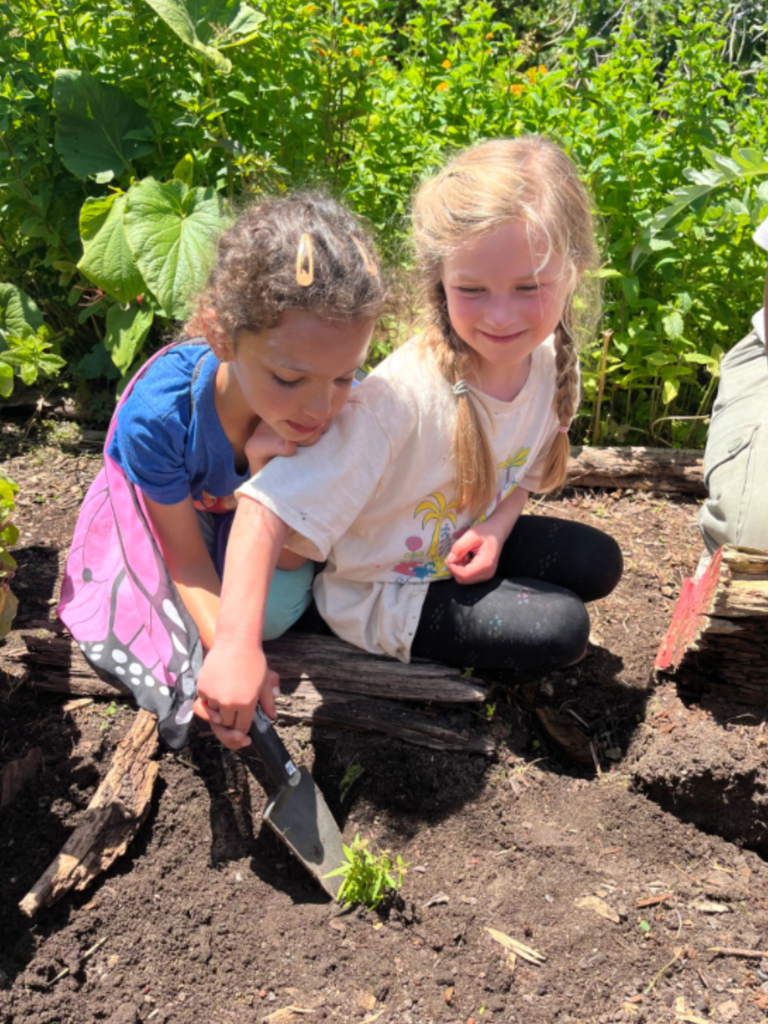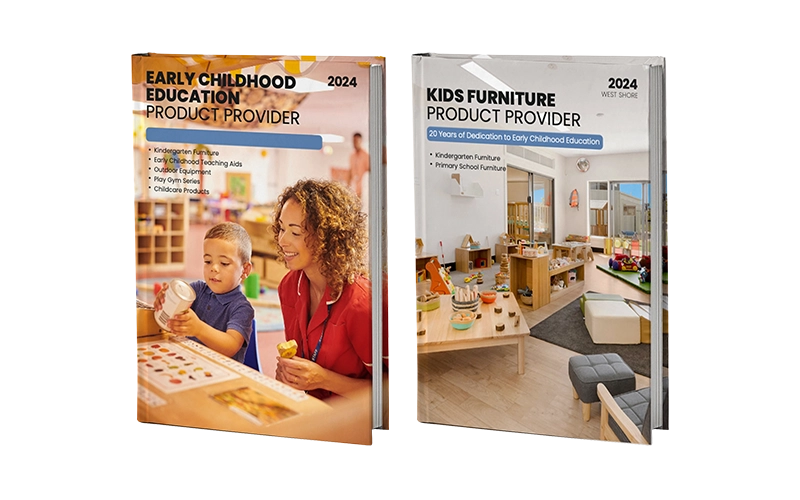Have you ever wondered how much freedom a child should have to make decisions? How does allowing a child to take action influence their development? Why is autonomy crucial for their cognitive and emotional growth? In this article, we explore the importance of autonomy in child development and its lasting impact on a child’s future.
Autonomy is a cornerstone of childhood development. Allowing children to make small decisions helps them build essential decision-making skills and practice problem-solving. This process encourages resilience as they learn to face challenges and understand the consequences of their choices. Over time, autonomy boosts self-esteem, fosters confidence, and nurtures critical thinking, all of which are crucial for both emotional and cognitive growth.
Children possess a natural curiosity and a strong desire to explore their world. As parents, educators, and caregivers, nurturing and encouraging this autonomy is essential. By providing opportunities for children to make decisions, even in small matters, we help them develop a sense of ownership and control over their lives.

What is Autonomy in Child Development?
Autonomy in Child Development is when one strives to gain a sense of oneself as a separate, self-governing individual. Between ages 1–3, during the second stage of Erikson’s and Freud’s stages of development, the psychosocial crisis that occurs is autonomy versus shame and doubt. The significant event during this stage is that children must learn to be autonomous, and failure to do so may lead to the child doubting their abilities and feeling ashamed.
When a child becomes autonomous, they can explore and acquire new skills. Autonomy has two vital aspects: an emotional component, where one relies more on oneself than one’s parents, and a behavioural component, where one makes decisions independently using one’s judgement. The styles of child rearing affect the development of a child’s autonomy. Autonomy in adolescence is closely related to their quest for identity. In adolescence, parents and peers act as agents of influence. Peer influence in early adolescence may help adolescents gradually become more autonomous by making them less susceptible to parental or peer influence as they age. The most important developmental task in adolescence is to develop a healthy sense of autonomy.

The Autonomy vs Shame and Doubt Stage
During this stage of development, children begin to assert their independence. As they grow, they explore their environment more actively, learning to walk, talk, and interact with the world around them. They develop control over their bodies and start making decisions about simple tasks—such as what to wear or eat. This newfound sense of control is what Erikson refers to as autonomy.
Autonomy means that the child feels confident in their ability to make decisions, complete tasks, and regulate their actions. However, it is crucial to understand that autonomy does not happen overnight; it’s a gradual process that requires the child’s environment to be supportive and encouraging. For example, caregivers who provide choices rather than imposing strict control encourage children to develop this autonomy.
The Role of Shame and Doubt
While autonomy is a central theme in this stage, shame and doubt are opposing forces. If caregivers are too controlling, overly critical, or do not allow children to make their own decisions, the child may feel shame or doubt about their abilities. For instance, if a child is constantly told “no” or is punished for making mistakes, they may question their decisions, competence, and ability to act independently. This can lead to shame and doubt about themselves and their ability to make choices.
Erikson believed that the balance between autonomy and shame/doubt is crucial. Children encouraged to make choices and explore their independence in a safe, supportive environment develop confidence and self-reliance. On the other hand, if their freedom is stifled, it can lead to a lack of self-confidence and an ongoing struggle to trust their abilities.
Autonomy in Action
Autonomy in child development, according to Erikson, isn’t about total freedom or a lack of boundaries. Instead, it’s about supporting children’s ability to make decisions within a framework of understanding and guidance. For example, a toddler may be allowed to choose between two snacks or decide which toy they want to play with, but the parent might still set limits, such as having a specific time for a nap or bedtime. This balance of freedom and structure helps the child feel empowered without becoming overwhelmed or confused.
By fostering autonomy during this critical stage, caregivers help children develop a strong sense of self and the confidence to explore their world. These early experiences lay the foundation for further phases of development, where children will continue to develop essential social, cognitive, and emotional skills.

The Importance of Autonomy in Child Development
The Role of Autonomy in Building Confidence and Self-Esteem
Autonomy in Child Development is key to building self-confidence. When children make decisions, they realize that their choices matter. This helps them develop confidence in their abilities. Over time, allowing children to make small decisions fosters a sense of ownership and belief in their skills, boosting self-esteem.
Enhancing Problem-Solving Skills Through Autonomy
Autonomy in Child Development directly enhances problem-solving skills. By making decisions, children face challenges that require them to think critically. Whether solving a puzzle or deciding what to play with, autonomy encourages children to assess options and find solutions independently, boosting their cognitive development and problem-solving abilities.
Fostering Emotional Regulation Through Autonomy
Making choices and experiencing consequences are crucial for emotional regulation. Autonomy in Child Development teaches children to manage emotions, such as disappointment, when things don’t go as planned. Over time, this helps them build resilience and emotional intelligence, empowering them to handle setbacks confidently.
Encouraging Independence Through Autonomy
Autonomy in Child Development supports independence by allowing children to perform tasks independently. Making decisions fosters self-reliance in everyday activities, like dressing or organizing. As children practice autonomy, they become more capable of handling tasks without help, laying the foundation for greater independence.
Strengthening Social Skills and Cognitive Growth
Autonomy in Child Development helps improve social skills and cognitive growth. When children make choices in social situations, they practice communication and empathy. Autonomy also enhances cognitive skills like decision-making and critical thinking, helping children navigate complex situations and develop essential life skills.

How to Encourage Autonomy in Children
Encouraging autonomy in children requires a thoughtful approach. The goal is to create an environment where children feel safe to make decisions, explore, and take responsibility for their actions. Here are some ways to encourage autonomy:
Provide Choices
Allowing children to make choices empowers them. Instead of dictating every action, offer options: “Do you want to wear the red or blue shirt?” This helps children feel in control of their decisions and encourages independent thinking.
Encourage Independent Problem-Solving
Help children develop problem-solving skills by guiding them rather than providing solutions. For example, instead of solving a puzzle for them, ask, “What do you think comes next?” This encourages them to think critically and build confidence in their abilities.
Allow for Natural Consequences
Let children experience the outcomes of their decisions. If a child forgets their lunch, they will learn the importance of responsibility. Natural consequences teach accountability and help children understand cause and effect.
Promote Independent Play
Independent play is one of the best ways to encourage autonomy. Provide a variety of toys and materials, and let children decide what to play with and how. This helps them develop self-direction, creativity, and decision-making skills.
Offer Age-Appropriate Tasks
Assign children tasks they can handle independently, such as setting the table or picking up their toys. These small responsibilities build their independence and give them a sense of accomplishment, fostering a positive relationship with autonomy.

Support Exploration and Curiosity
Encourage children to explore their surroundings and ask questions. Allow them to follow their curiosity, whether it’s through a new hobby, outdoor activities, or imaginative play. Exploration supports cognitive development and reinforces their sense of autonomy.
Autonomy vs Independence Child Development
Autonomy and independence are essential concepts in child development, yet they are often misunderstood as interchangeable. While they are related, subtle differences play a significant role in shaping a child’s growth.
Autonomy refers to a child’s ability to make decisions and take actions based on their choices, often in the context of personal values and preferences. It is a process that allows children to develop a sense of control over their own lives. Autonomy helps children navigate their world as they learn to assess situations, solve problems, and take responsibility for their actions. It is closely tied to cognitive development, fostering critical thinking and decision-making skills crucial for future success.
On the other hand, independence involves the ability to perform tasks and functions independently, without relying on others for support. It encompasses a child’s ability to care for themselves, such as dressing, eating, and managing personal tasks, without external assistance. Independence is rooted in physical and emotional development, fostering self-reliance and the confidence to accomplish goals.
| Aspect | Autonomy | Independence |
| Definition | The ability to make decisions and act based on personal choices. | The ability to perform tasks and functions without relying on others. |
| Focus | Internal decision-making and self-regulation. | External self-sufficiency and performing tasks independently. |
| Developmental Domain | Cognitive and emotional growth. | Physical and emotional growth. |
| Key Skills | Self-care, task management, and self-reliance. | Self-care, task management, self-reliance. |
| Example | Choosing what to wear, deciding how to spend free time. | Dressing oneself, feeding oneself without assistance. |
| Goal | Developing self-control and self-expression. | Becoming capable of managing daily tasks on one’s own. |
| Impact | Fosters confidence, responsibility, and resilience. | Builds self-esteem, competence, and security. |
While autonomy and independence are key to a child’s growth, autonomy is more about the internal process of making choices, while independence focuses on external capabilities. Together, they support the development of self-esteem, resilience, and the ability to adapt to various situations in life. Both are crucial for preparing children for the challenges they will face as they grow into adulthood.
What Kind of Activity Would Best Support the Development of Autonomy in a Child?
Supporting autonomy in children involves allowing them to make choices and take responsibility for their actions.
Certain activities are particularly effective at nurturing this developmental milestone. Here are some activities that can best support a child’s autonomy:
1. Free Play
Why it helps: Independent play is one of the best ways to foster autonomy. It encourages children to choose their activities, set goals, and explore the world at their own pace. This form of play allows children to engage with their imagination, develop problem-solving skills, and learn how to self-direct.
How to implement it: Create a safe, stimulating environment where children can explore freely. Provide a variety of toys, games, and materials that promote creativity, like blocks, art supplies, or open-ended toys (e.g., dolls, cars, building sets). Let children decide how to use these materials and what stories or scenarios they want to act out.
For example, a child may build a fort with cushions and blankets, inventing a whole imaginary world. During independent play, children practice self-control and decision-making, both key aspects of developing autonomy.

2. Montessori-Inspired Activities
Why it helps: Montessori-inspired activities encourage children to engage in hands-on learning that they can control. These activities are designed to pro00000000000000000mote independence, concentration, and confidence. Children can choose activities based on their interests, allowing them to develop critical thinking skills and self-regulation.
How to implement it: Provide materials encouraging active participation, such as sorting trays, Montessori math manipulatives, or practical life activities like pouring, sweeping, or buttoning. The key is to allow children to explore these materials and complete tasks independently.
For example, a child might use a spoon to transfer beans from one bowl to another, practicing fine motor skills and concentration. In a Montessori environment, children often work at their own pace, learning to decide what to do next and how to solve their challenges.
Montessori activities encourage autonomy because children are not simply following instructions but are actively involved in their learning process. This kind of independence fosters confidence and a strong sense of accomplishment.

3. Gardening and Caring for Plants
Why it helps: Gardening offers children a hands-on way to practice autonomy. It encourages responsibility, patience, and long-term thinking—key traits for developing a sense of self-sufficiency. Children learn to make decisions about plant care, from choosing what to plant to figuring out how much water and sunlight the plants need.
How to implement it: Set up a small garden in your backyard or with indoor plants. Allow children to choose which plants or flowers they want to grow and teach them how to care for them. Assign specific tasks, such as watering the plants or monitoring their growth. As children take ownership of these plants, they begin to understand the consequences of their actions (e.g., overwatering, neglecting the plants) and how their decisions directly impact their environment.
Gardening is an excellent way to reinforce autonomy because it combines practical life skills with emotional responsibility. Children can choose what to plant and learn to care for living things, understanding the importance of nurturing and responsibility.

These activities empower children to learn from their experiences, navigate challenges, and make confident decisions in their daily lives—laying the foundation for future emotional and cognitive growth.
FAQs
1. How can I encourage my child to become more independent?
Provide opportunities for decision-making in daily routines, like choosing clothes or snacks. Allow them to solve simple problems on their own, such as choosing which toy to play with. Encourage independent play, where they can explore and create without direct supervision. Let them take responsibility for small tasks like tidying up their toys or setting the table. Offer praise for their efforts, fostering confidence and a sense of accomplishment.
2. What are some examples of activities that promote autonomy in children?
Montessori-inspired activities that allow children to choose their tasks and work independently. Gardening activities where children can decide which plants to care for and manage their growth. Simple problem-solving challenges like puzzles or games that require them to think critically. Providing choices in daily routines, such as selecting clothes or deciding what to eat. Allowing children to take charge of their personal tasks, like brushing their teeth or organizing their toys.
3. How does autonomy affect a child’s emotional development?
Autonomy helps children develop a sense of self-confidence and self-esteem. It teaches them to take responsibility for their actions and decisions, fostering a sense of independence. Allowing children to make choices helps them feel in control, which can reduce anxiety and promote emotional stability. When children experience the consequences of their decisions, they learn emotional regulation and resilience. Autonomy also helps children understand their own needs and desires, contributing to emotional maturity.
4. At what age do children begin to develop autonomy?
Children begin to develop autonomy as early as toddlerhood, around the age of 18 months to 2 years. During this period, they start to assert their independence by making simple choices, such as picking out their clothes or deciding what toy to play with. As they grow, they continue to refine their autonomy through more complex decision-making and personal responsibility.
5. What are the effects of lack of autonomy in childhood?
Lack of autonomy can hinder a child’s ability to develop decision-making skills and self-confidence. Children who are not allowed to make choices may struggle with emotional regulation and may feel powerless, leading to anxiety, frustration, or low self-esteem. It can also impact their cognitive development, as they miss opportunities to practice critical thinking and problem-solving.
6. What is autonomy vs shame in child development?
In child development, autonomy refers to the ability to make choices and control one’s actions, fostering self-confidence and independence. Shame, on the other hand, occurs when a child feels inadequate or wrong for making decisions, often due to external judgment or restrictions. A balance between autonomy and guidance is crucial, as excessive shame can prevent healthy emotional and social development.
7. What is an example of autonomy in a toddler?
In toddlers, autonomy can be seen when they decide which food they want to eat, choose a book to read, or attempt to dress themselves. These small decisions allow toddlers to feel a sense of control and independence, which is crucial for their developing self-esteem and problem-solving abilities.
8. What is the sense of autonomy in childcare?
In childcare, a sense of autonomy refers to providing children with the freedom to make choices and manage tasks independently within a safe, supportive environment. Encouraging children to engage in self-directed activities, such as choosing their play, managing personal items, or taking part in age-appropriate chores, helps develop their independence and decision-making skills.
Conclusion
Encouraging autonomy in children is one of the most critical aspects of their early development. By providing opportunities for children to make choices, solve problems, and take responsibility for their actions, we foster their independence and equip them with the skills they need to thrive socially, emotionally, and intellectually. Activities like independent play, Montessori-inspired tasks, and daily decision-making are all powerful ways to support the development of autonomy in young children, helping them build confidence and resilience.
At West Shore Furniture, we understand the importance of creating environments that support and nurture children’s growth. With over 20 years of experience in the preschool furniture industry, we specialize in providing a wide range of high-quality, customizable furniture designed to enhance the learning and development of young children. From classroom design and furniture customization to production and delivery, we offer a comprehensive one-stop service to meet the unique needs of educational spaces. Whether you’re looking for functional tables, chairs, or other preschool furniture in various styles and sizes, we’re committed to delivering solutions that foster independence and creativity in your students.
Feel free to explore our collection of preschool furniture and discover how we can help transform your learning environments today.






